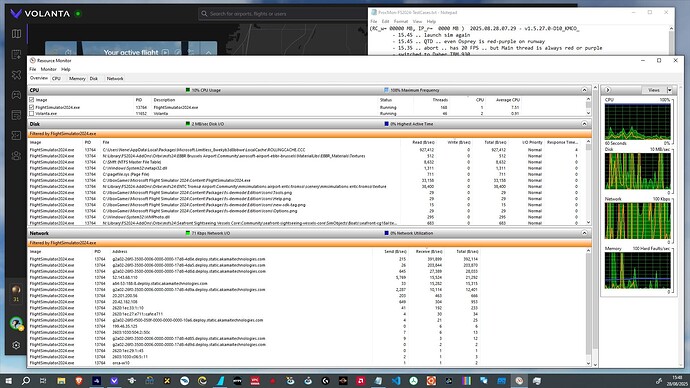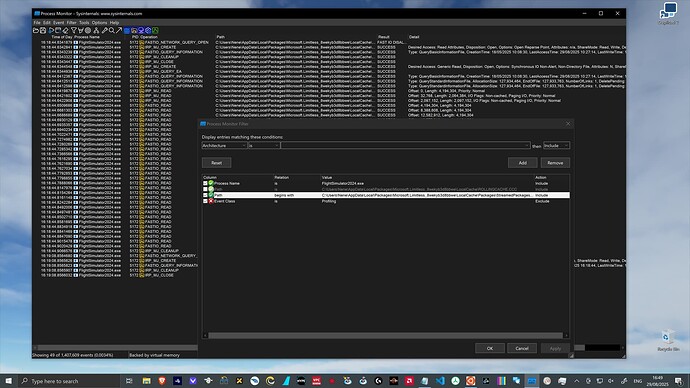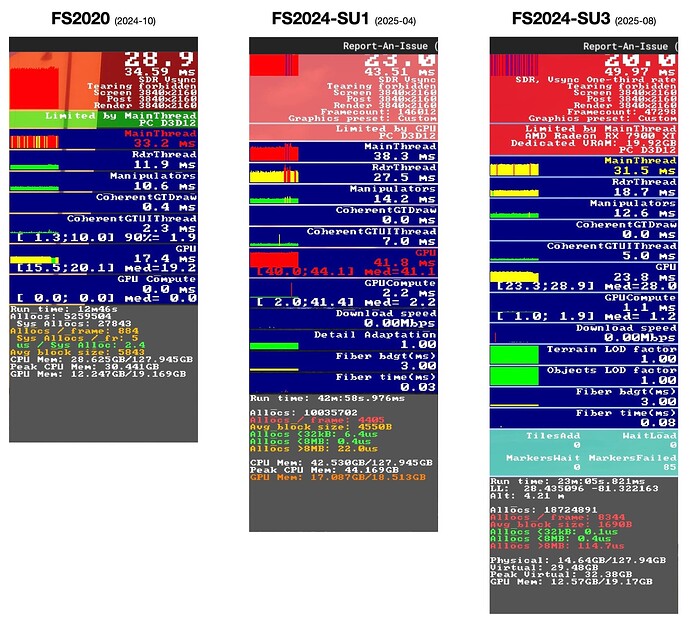Overview of RollingCache.ccc performance … under SU3
When FS2024 launched, the problems of the entire data pipeline have been obvious and frustrating … for me and many others.
In order to better understand what was going on and if there were ways to reduce the pain, this little goose started to collect information about the Rolling Cache (RC) and documented all the findings and ideas in this thread:
Ten month and three sim updates later I am planing to revisit the subject of the Rolling Cache in order to check and document the progress.
- This initial post will get updated over time in order to collect the key points.
- I plan to write individual posts related to individual subjects.
- I do not plan to repeat all the details from the initial thread
- … but I will try to provide links for those who want to read more about the history and the technical background.
Overall the release notes for the last three sim updates all had an impressive list of bug fixes … e.g.
However, only a handful of those items could clearly be identified as related to the RC, the servers, or the data pipeline. None of the items provided “real” information about what was changed at a technical level.
So a goose must do what a goose does … I guess.
High level summary of the RC status in SU3
(the following is a quick preliminary list … while I am starting to write the more detailed background postings)
Positive aspects
- Launch times are fairly consistent
- … with a little under 3 minutes (on my system)
- … instead of 3 to 5 … or even up to 60 minutes (up to SU2).
- … with a little under 3 minutes (on my system)
- Backend (CDN or database) servers seem to be a lot more responsive
- … as I have (since SU2) not seen heavily stressed or de-facto unavailable servers.
- Only the “initial Xbox log in” connect failure still comes up … very often.
- … as I have (since SU2) not seen heavily stressed or de-facto unavailable servers.
- SU3 added manual caching to “MyLibrary”
- … in the form of “old school” package downloads outside of the RC.
- Online data usage counter now is a correct GB counter
- … and (most likely) it also does correctly reset to zero on the configured day.
Negative aspects
- Marketplace images (and other data) are still not cached locally (e.g. in the RC)
- … which causes the UI to feel slooooow … and causes unnecessary IP traffic.
Rolling Cache file structure
- Under investigation … but it seems unchanged … meaning:
- There is only a single
RollingCache.cccfile- … fully “zero fill” preallocated on the storage device.
- A fixed index size of 512 MB.
- A fixed index item size of 72 bytes.
- This limits the RC to a maximum of ca. 7.45 Mio blob items.
- With an average of ca 30 KB per blob item that translates to
- … a maximum “really usable” RC size of ca. 220 GB.
- This limits the RC to a maximum of ca. 7.45 Mio blob items.
- There is only a single


